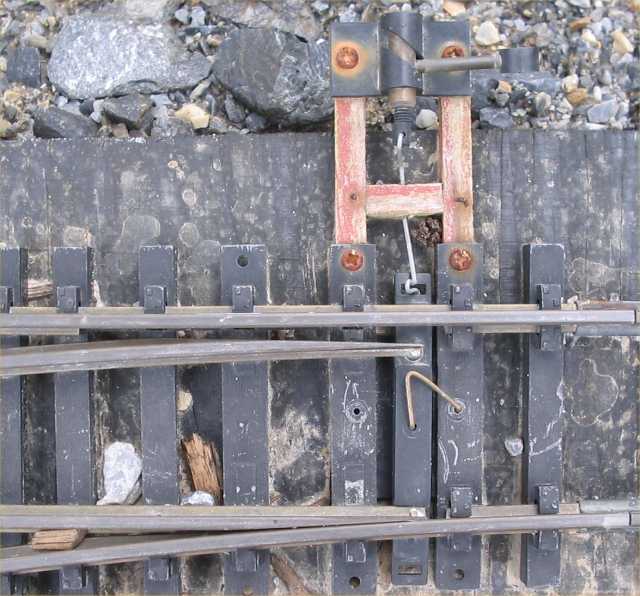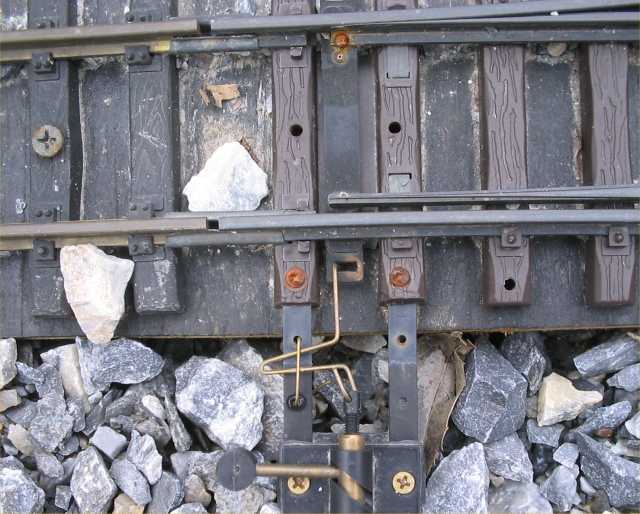Many of the manufacturers of turnouts include a control box or set of linkage to control the turnout. Almost all of them allow some form of spring linkage to allow run throughs automatically or the ability to prevent a derailment if accidently or if on purpose a unit over run the points.

On the overhead indoor portion of the KVRwy, these controls work well. And electrical power is even used to assist in some areas with limited access. These are also used on the Timesaver and can be thrown quickly when you are working against the clock. However, under most circumstances, I like the idea of the slow process of throwing the points before you can continue the switching manuever. Having had the chance to run on many different railroads. I have been looking for a turnout control that will work outside and not corrode or rust. Some people have offered great solutions of how to make ground throws or even old upright switch stands that myself or one of the animals would certinaly have bent flat to the ground shortly after the install. On the IPP&WRR, Friar Fred has used a modified turnbarrel bolt with a piece of spring wire for linkage. These work remarkably well and with being up on his bench work and limited ballast, hold up year after year with minimal maintenance. You can see one at the front wheels of the Climax.

But the KVRwy is on the ground, in ballast and has rocks and twigs constantly fouling the points. They need to be cleaned or swept often to prevent derailments and for positive throwing. For years, I have operated without any type of mechanism, allowing the ballast to hold the points over. It actually works pretty good and unless you are trying to go through the turnout at mach speeds, few derailments are ever a problem. Marty Cozad uses either turnouts he has built himself or Aristo large radius turnouts. He uses a Tenmille ground throw, with no spring and a positive hard through. You try to go through one of Marty’s turnouts without making certain the points are set in the right position and you can put a whole train down in a canyon.

I took some extensive pictures of his linkage and setup, when we were up there this Fall, and have begun the process of adopting this on some of the KVRwy turnouts. This will be a long slow process, I actually had to count the number of turnouts I have and lets just say there are quite a few. The KvRwy uses all LGB 1600 turnouts and part of the challenge will be a fixture that will extend the ties out far enough on one side to clear even 1:20.3 equipment and look like it is part of the turnout. I’ll post more as this project continues and supplies arrive.



